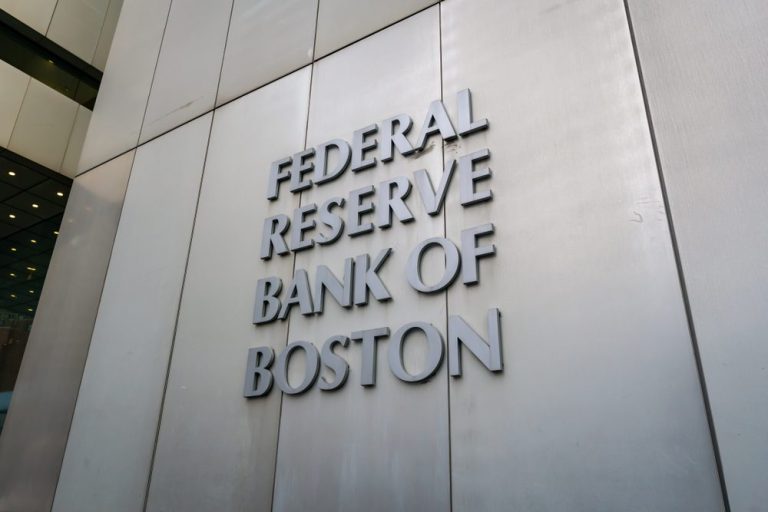
A U.S. digital dollar is possible, and researchers have built the framework to prove it.
That’s according to a multi-year project from the Federal Reserve Bank of Boston and the Digital Currency Initiative at the Massachusetts Institute of Technology (MIT), which has laid fresh groundwork for a central bank digital currency (CBDC).
Undertaken as a joint research effort called “Project Hamilton,” the exercise has reportedly proven the technical feasibility of a U.S. CBDC.
The Boston findings preclude a “watershed” digital currency project the New York Federal Reserve is conducting with a consortium of leading commercial financial institutions, including BNY Mellon, Citi, HSBC, Mastercard, PNC Bank, Truist, U.S. Bank, TD Bank and Wells Fargo.
Named for the original central bank “Founding Father,” Alexander Hamilton, as well as pioneering MIT and Apollo Mission computer scientist Margaret Hamilton, the Boston Fed and MIT research project findings add to efforts from more than 90 other central banks around the world investigating what, exactly, federally run digital currency banking might one day look like.
Nearly every G20 country has made significant progress in CBDC projects over just the past six months, while all G7 economies have successfully moved from the research stage of a CBDC to the development stage. Meanwhile, 11 countries have already launched their own digital currencies into circulation, with Jamaica being the latest to do so.
Cousin of Crypto
While inspired by Bitcoin and other cryptocurrencies, the concept of minting a national digital fiat is different from them in one key way – CBDCs are legal tender, while cryptocurrencies are digital assets.
Project Hamilton’s design for a highly efficient digital dollar focused on better understanding the capabilities and the limitations of various technologies that could be used to manage and transfer CBDCs in the future.
“Project Hamilton took critical early steps toward a deeper understanding of how money might work better for all,” Boston Fed Executive Vice President Jim Cunha said in a public statement.
The first phase of the work developed an open-source transaction processor capable of supporting a high-performance CBDC. Called OpenCBDC, the processor was able to settle between 170,000 and 1.7 million transactions per second and bring nearly all (99%) of transactions to completion in under five seconds.
This “real-time” equivalent settlement speed is much faster than both the Bitcoin and Ethereum blockchains and most options available today.
Other countries around the world researching the feasibility of their own CBDCs have been invited to contribute to the open-source codebase of the OpenCBDC software.
Digital Dollar Debate
The leaders behind Project Hamilton have been careful to emphasize the project was “agnostic” about any future policy decisions regarding a U.S. CBDC and should be viewed solely as a test of technical capabilities.
The Federal Reserve and the Biden administration have shown interest in a digital dollar, with Biden signing an executive order in March 2022 that called for American leadership to explore CBDC possibilities.
That hasn’t stopped the prospect of a U.S. CBDC from stirring up controversy on Capitol Hill.
Earlier this month (Dec. 1), the ranking Republican on the House Financial Services Subcommittee on Oversight and Investigations, Congressman Tom Emmer, sent a letter expressing his concern over the implications of Project Hamilton to Susan Collins, President of the Boston Fed.
“It was brought to our attention that some firms participating in the collaboration may be using Project Hamilton to research, develop and scale CBDC products with the intent to then sell those products to commercial banks,” the letter reads.
“The more we learn about the Boston Fed’s work on Project Hamilton, the more we have become concerned with the lack of transparency, especially as it relates to their partnership with the private sector. The unfair advantage that some private companies could enjoy from this partnership and the failure to ensure the principles of privacy, sovereignty, and free markets should be concerning to every American,” Emmer concluded.
A representative for the Boston Federal Reserve, in an email to PYMNTS, underscored that their work was purely academic, with no participation from commercial or non-federal financial institutions.
In January, Emmer introduced a bill to prohibit the Federal Reserve from issuing a CBDC directly to individuals. That raised the fear that if the Federal Reserve were to “mobilize itself into a retail bank,” it could collect personal information from citizens and act as a surveillance tool to track them through their transactions.
Emmer has not yet replied to PYMNTS’ request for comment.
Researchers from the Boston Fed and MIT involved in Project Hamilton have indicated they plan to release additional retrospectives on the project’s findings in 2023.
For all PYMNTS crypto coverage, subscribe to the daily Crypto Newsletter.